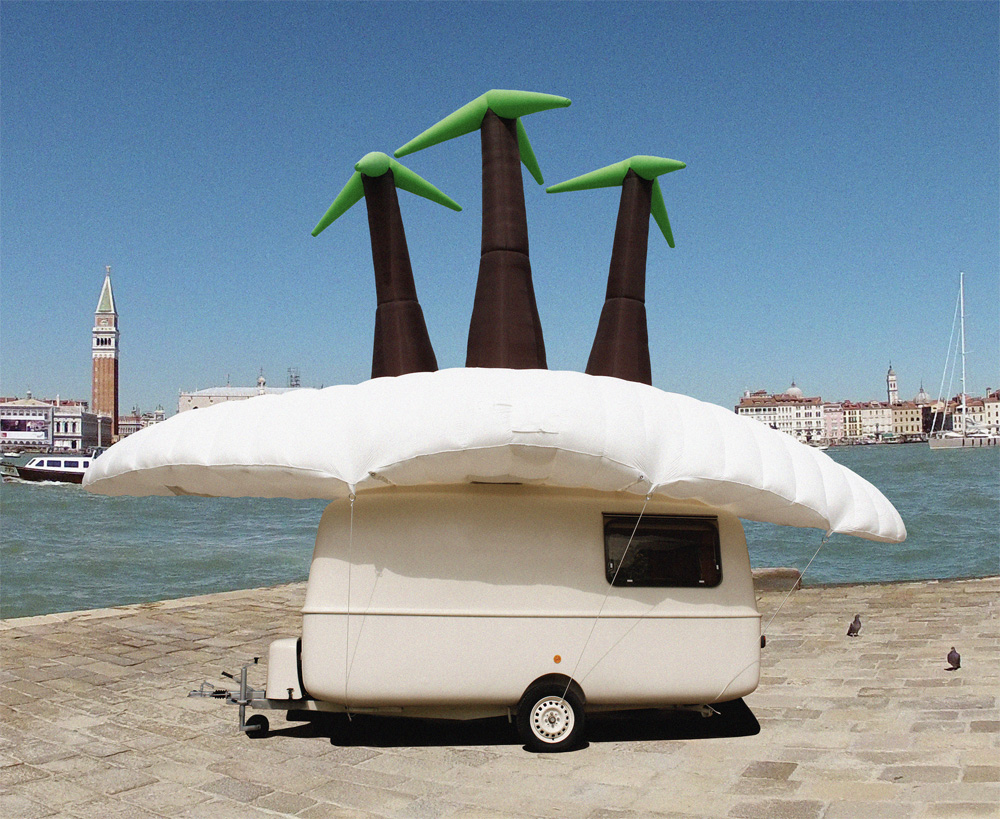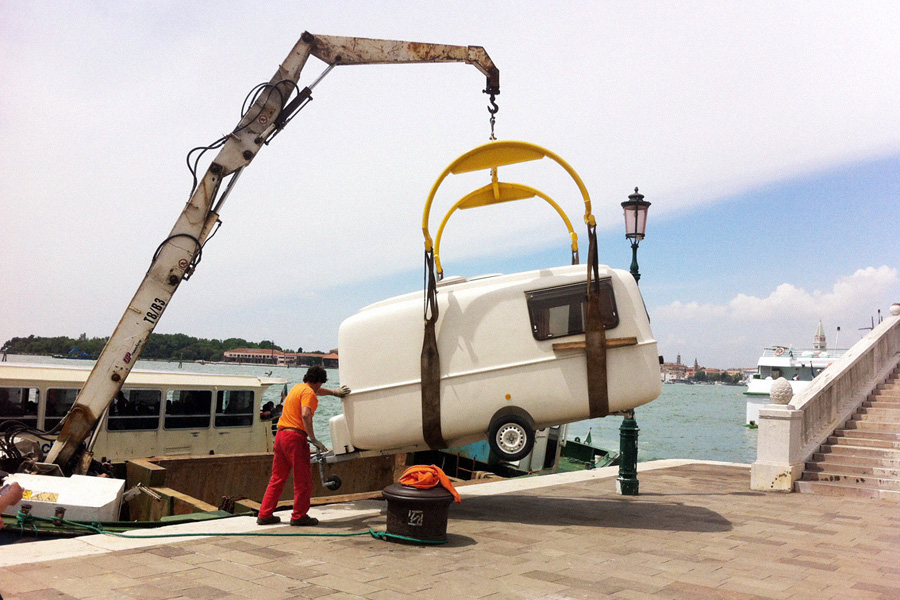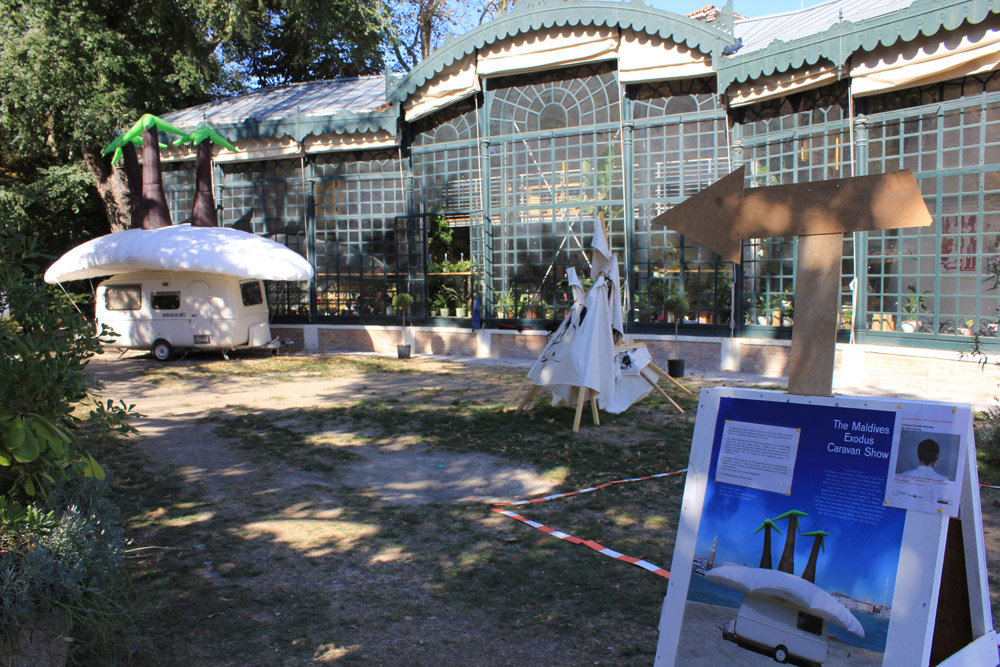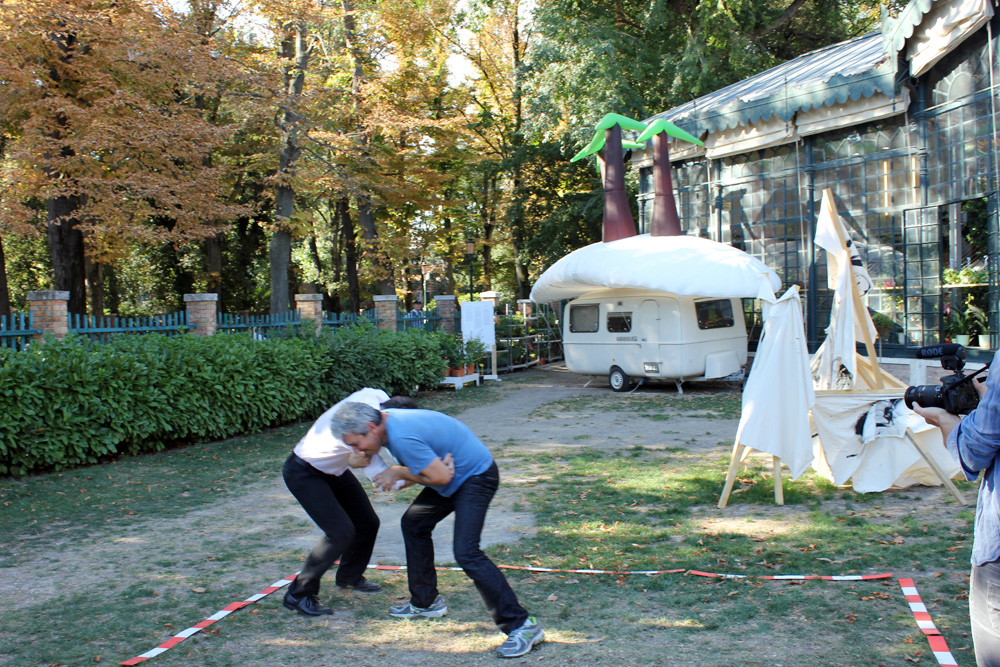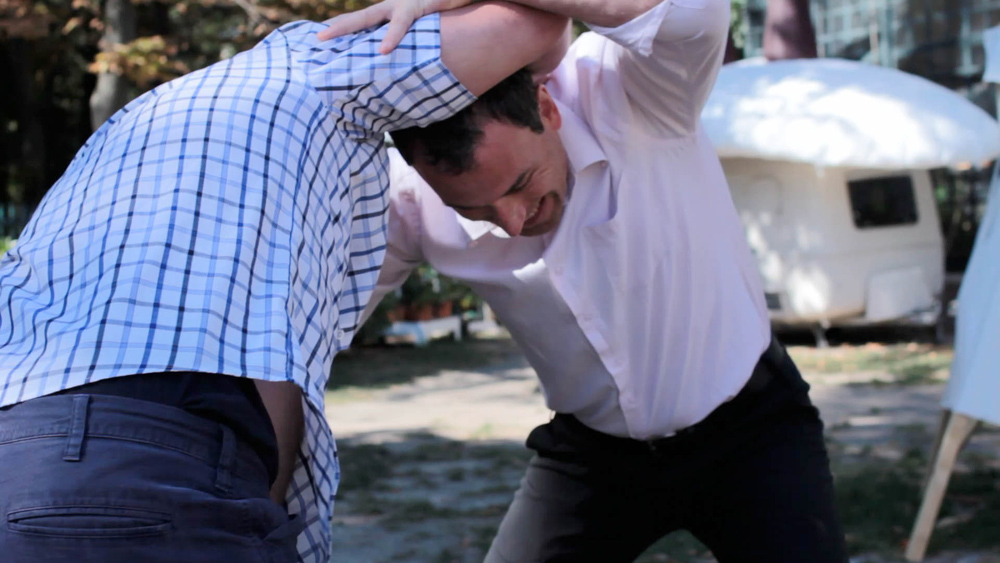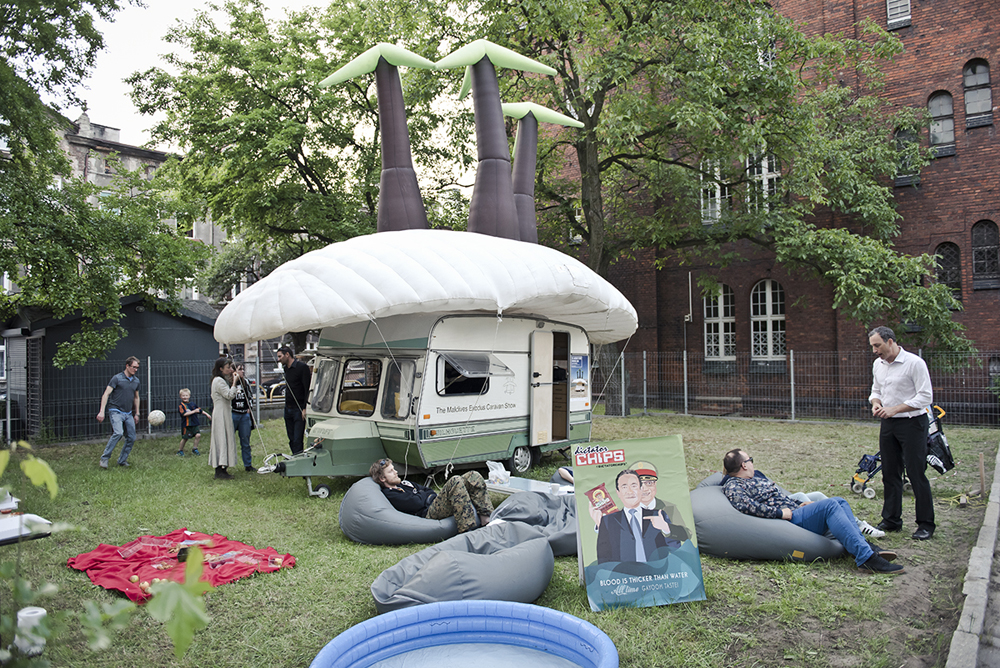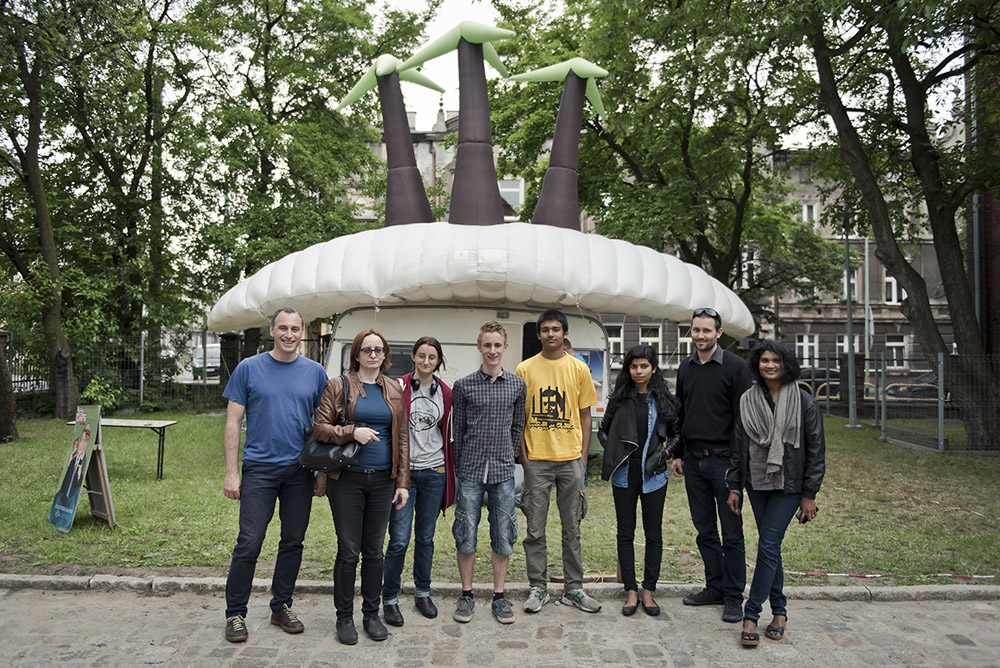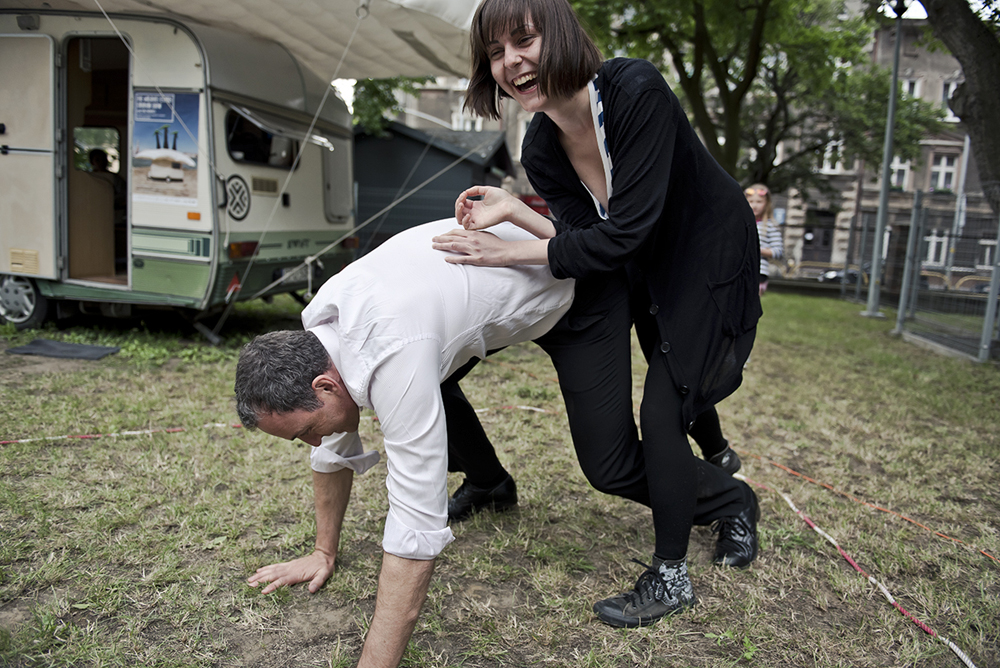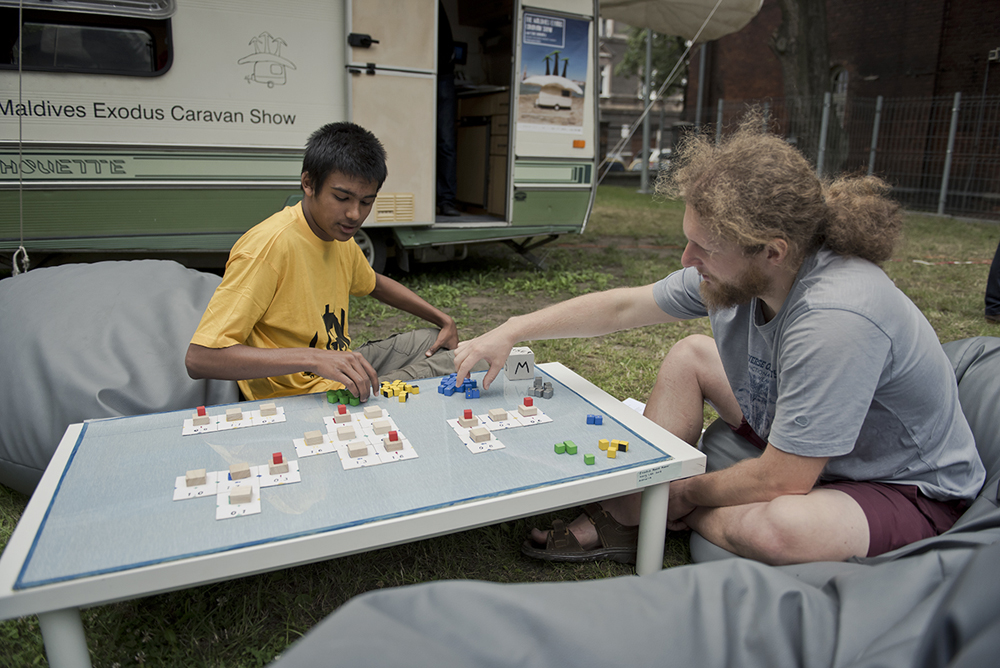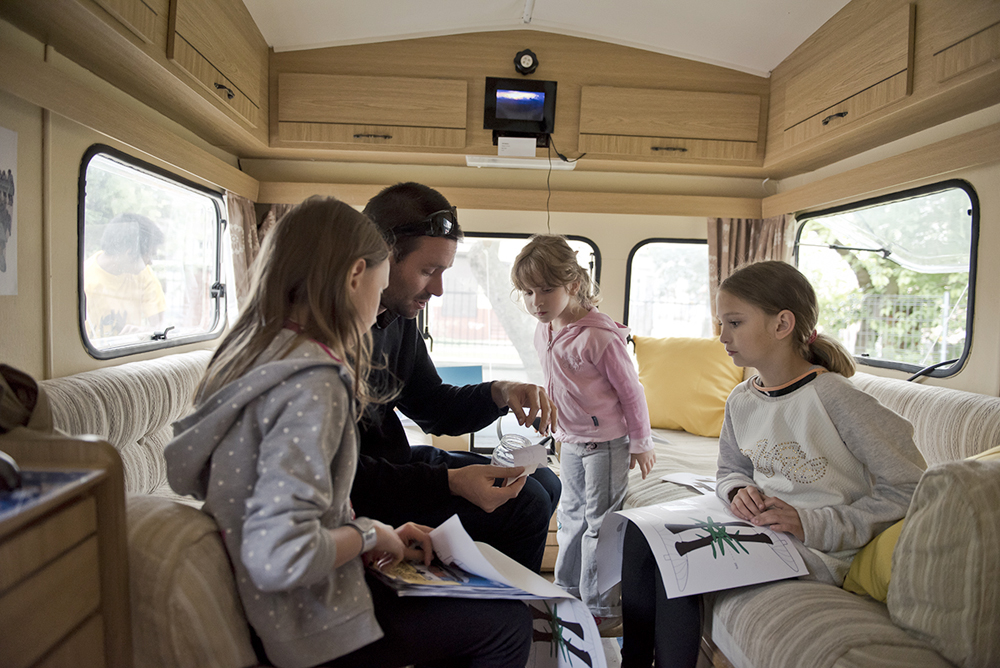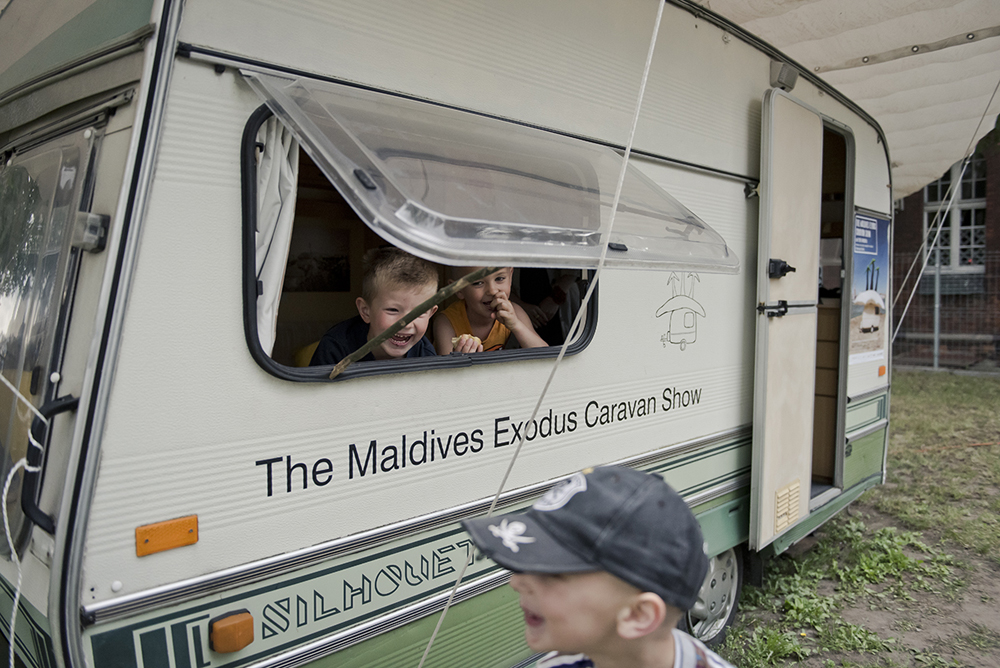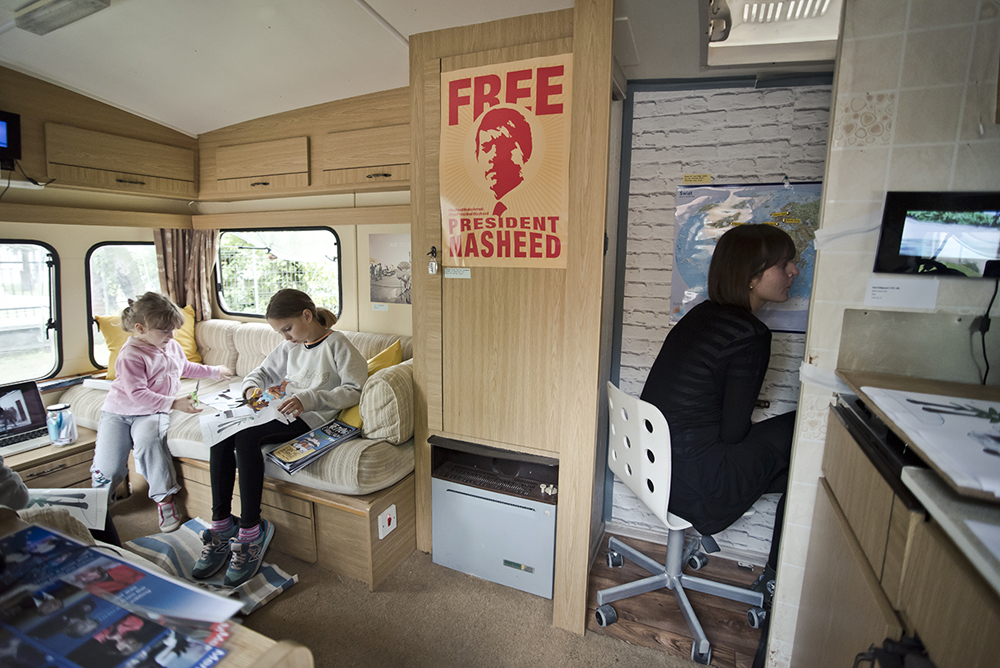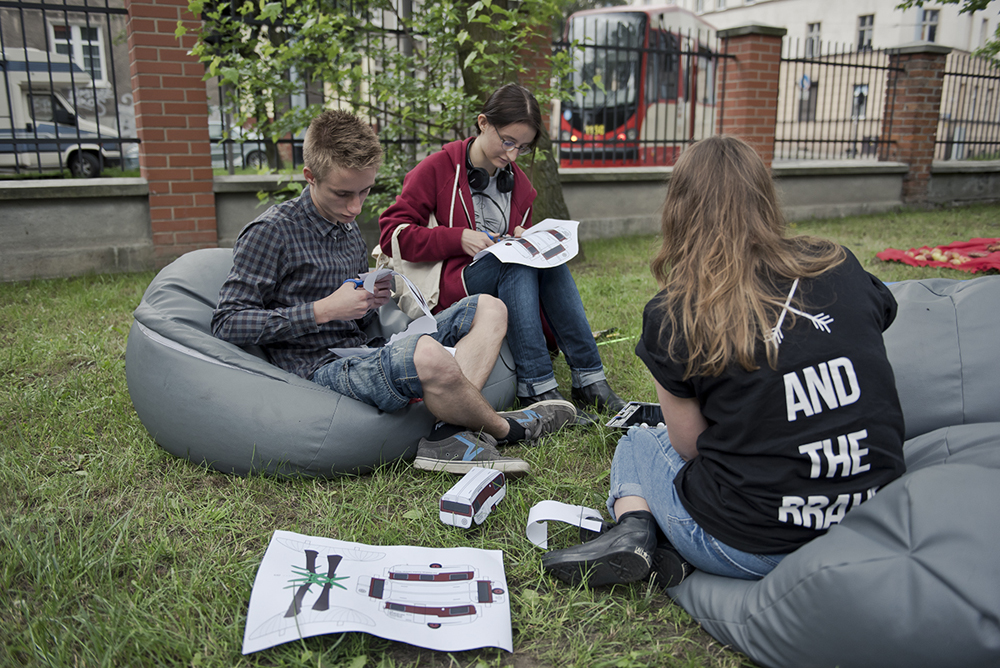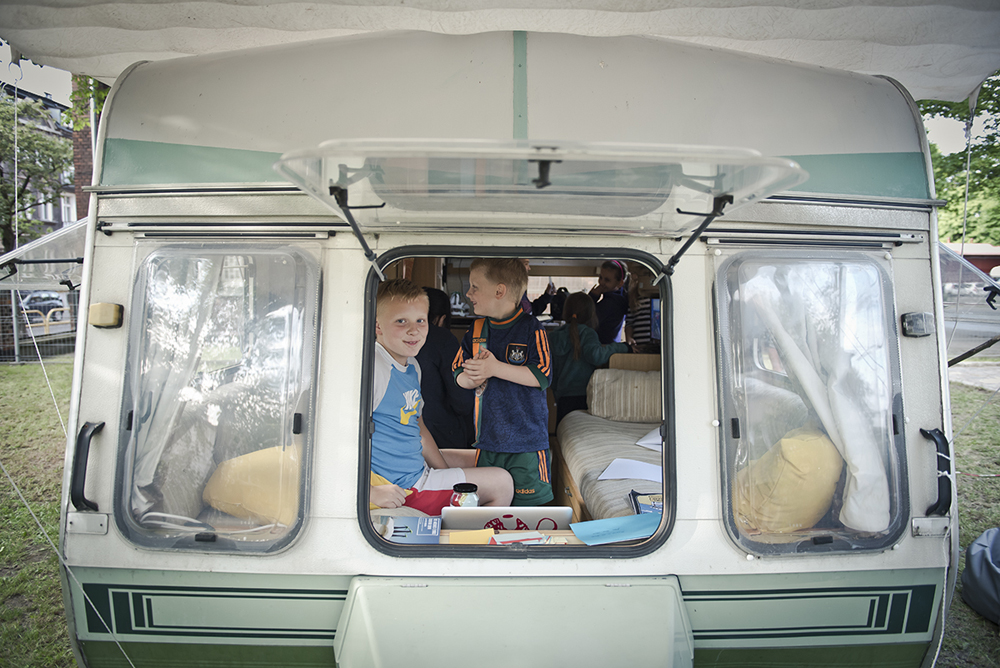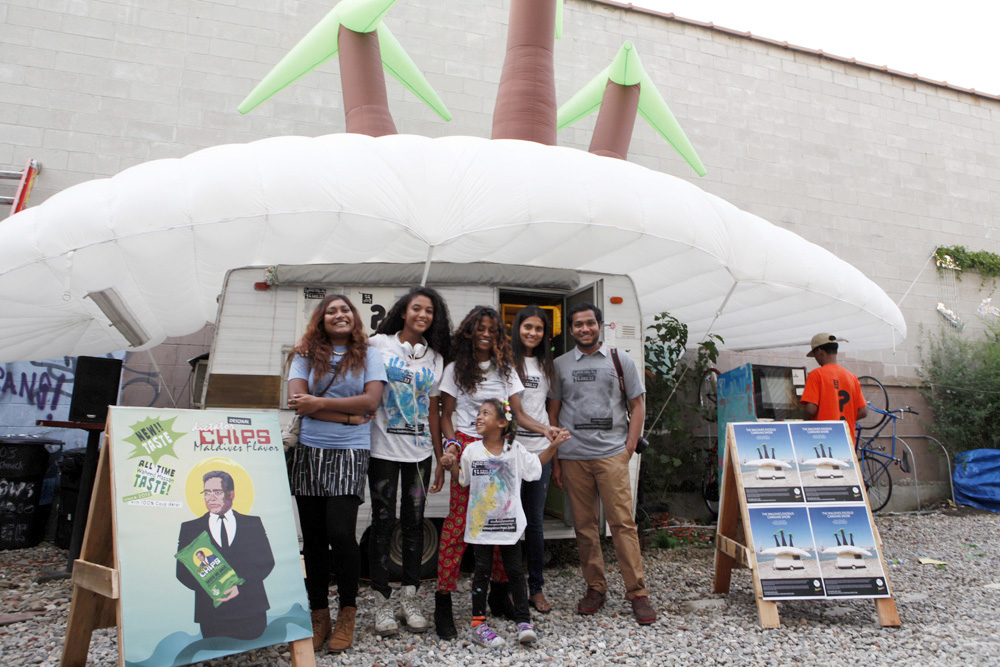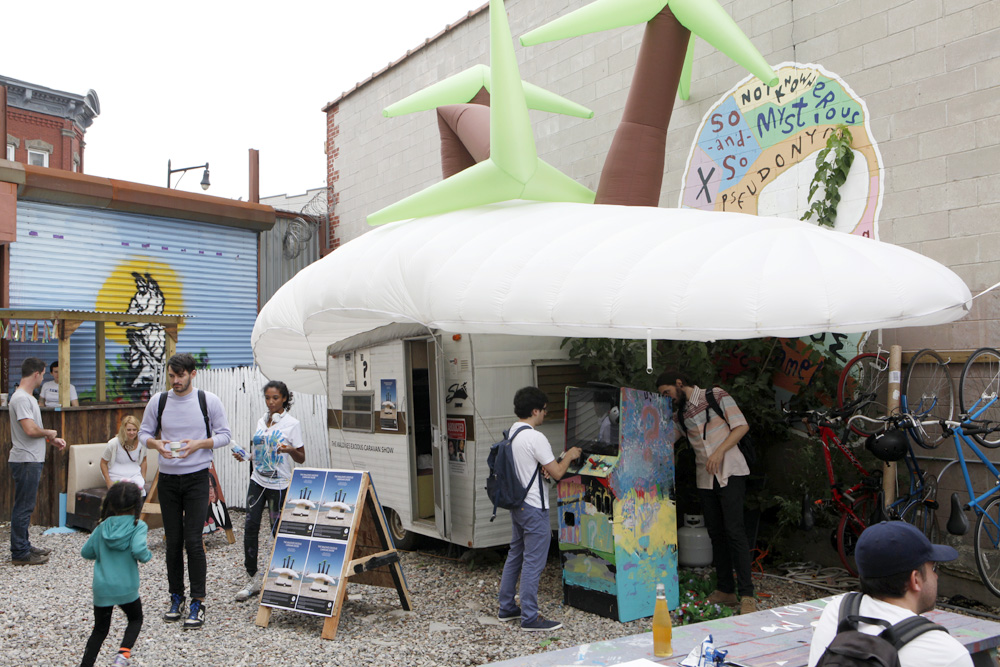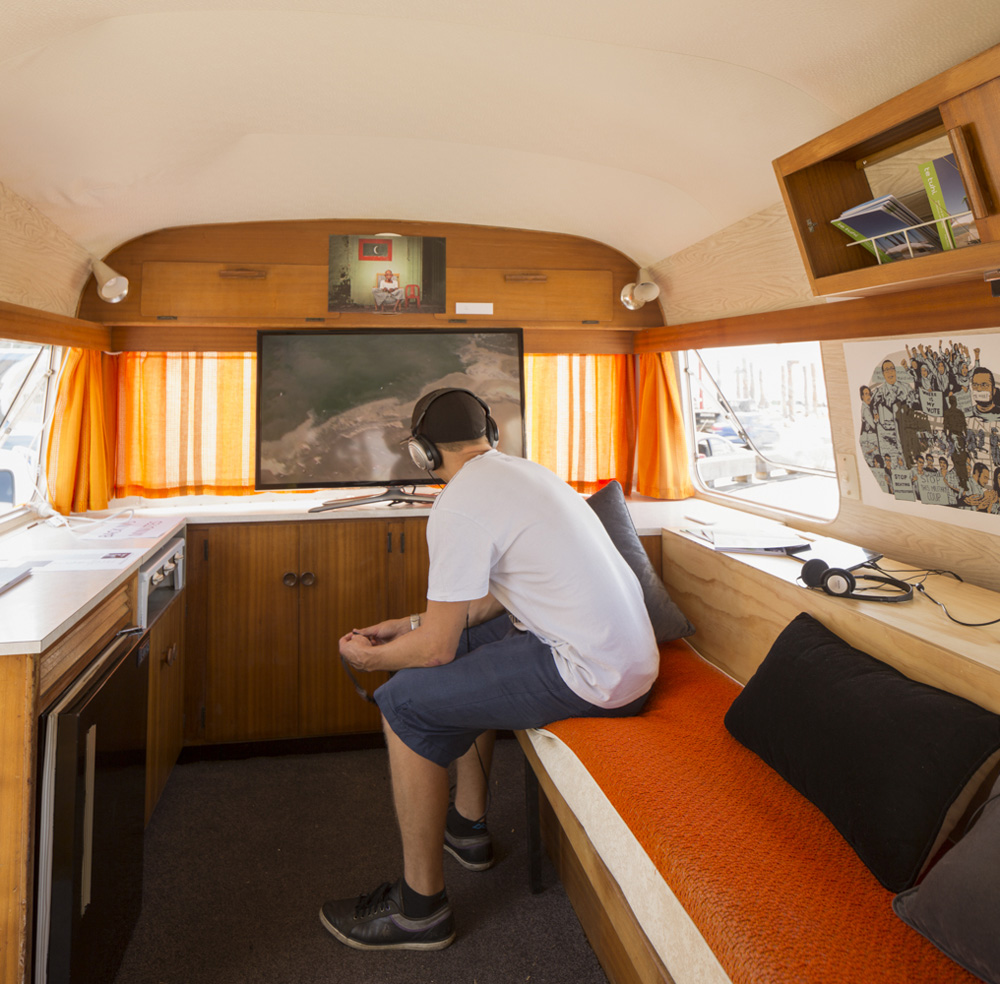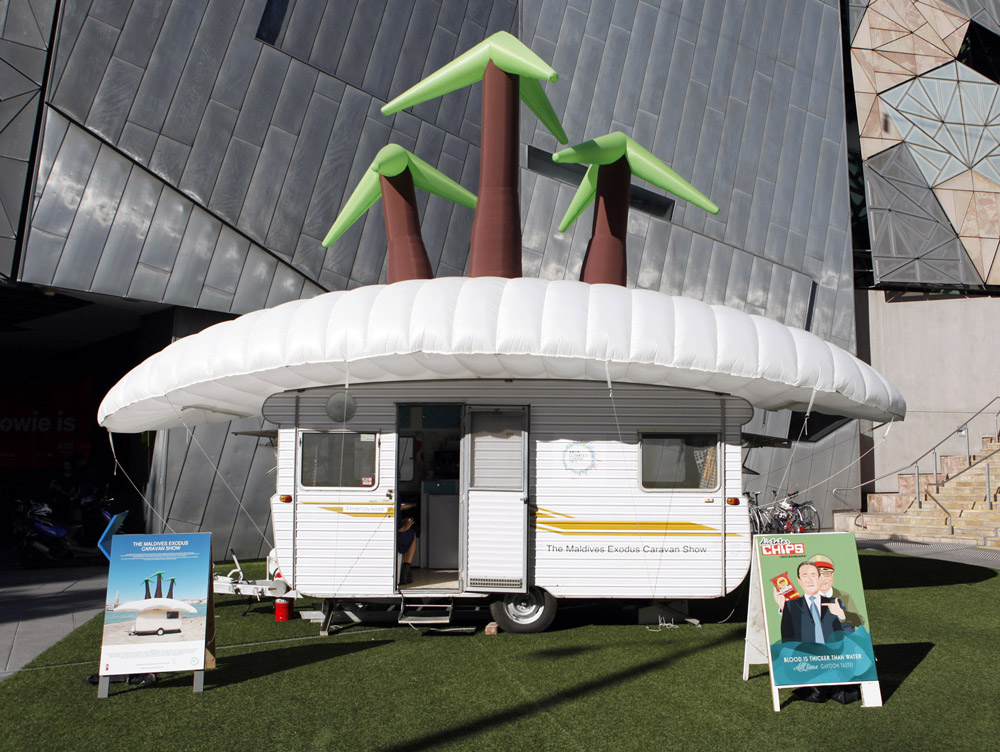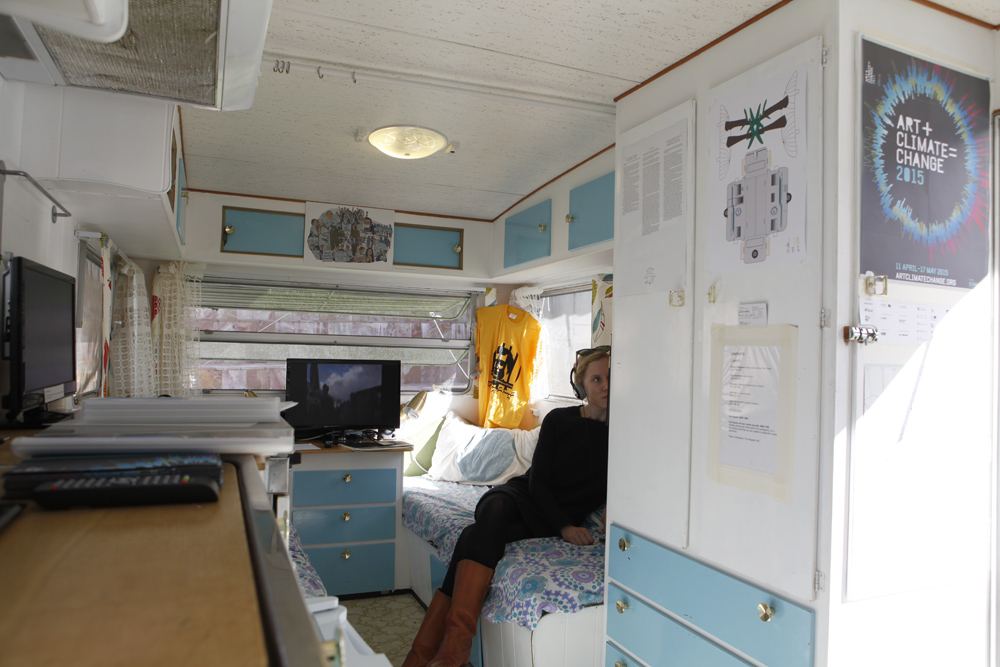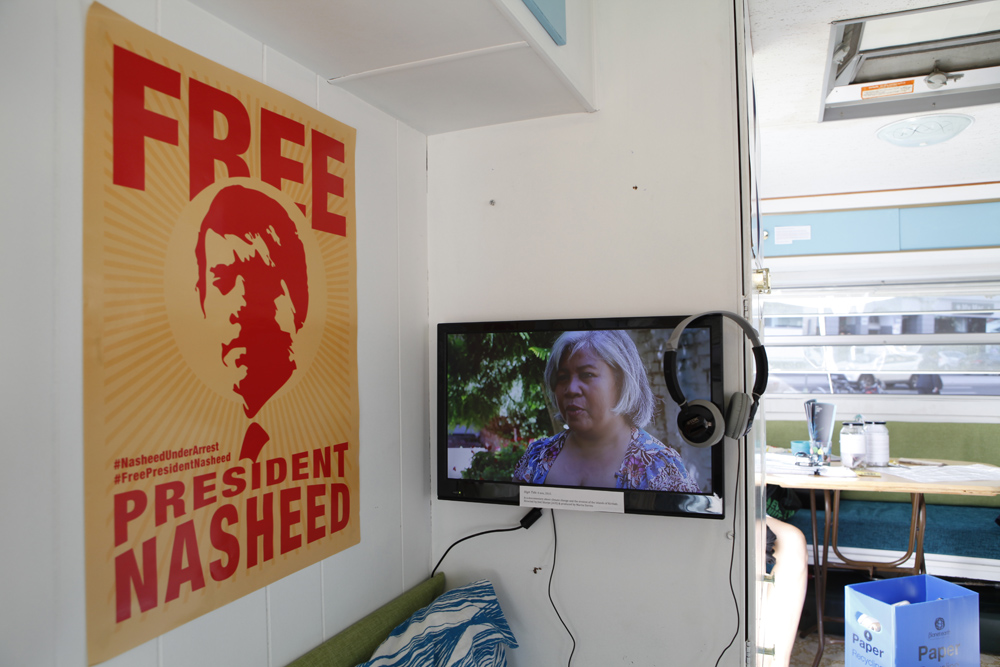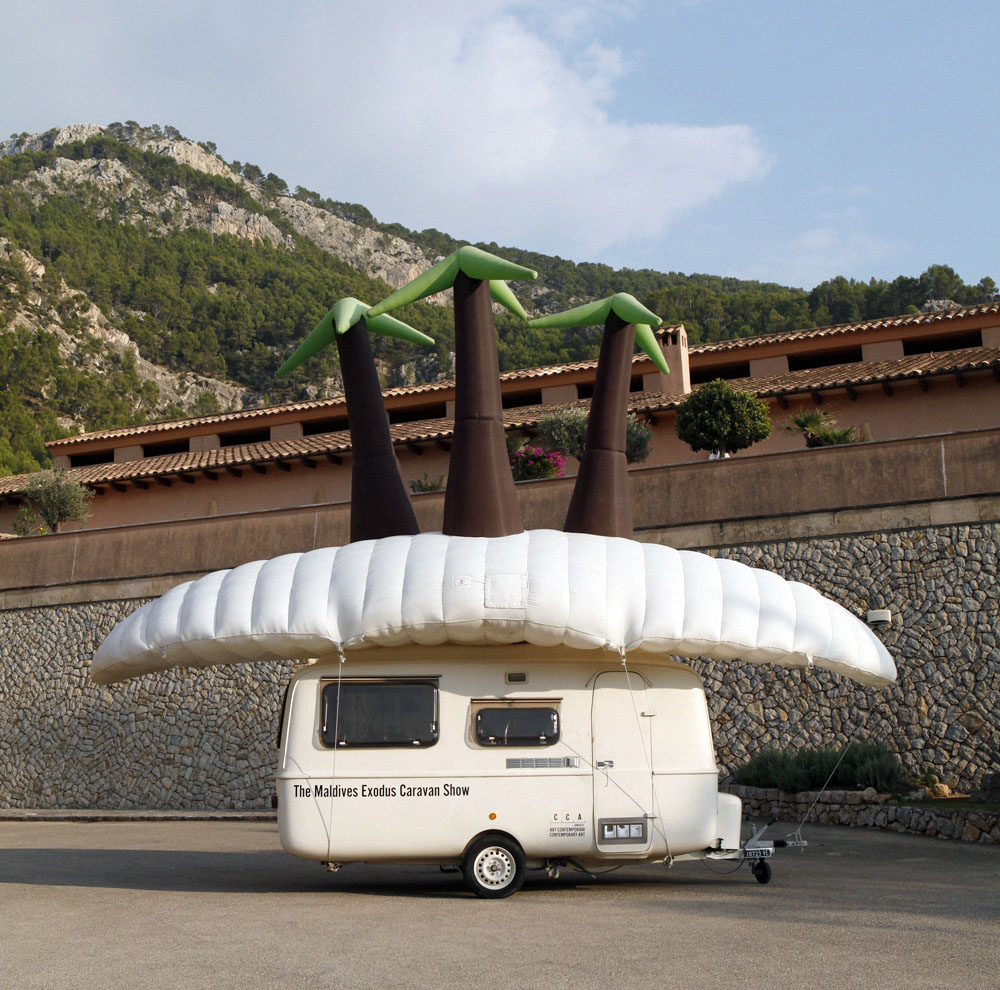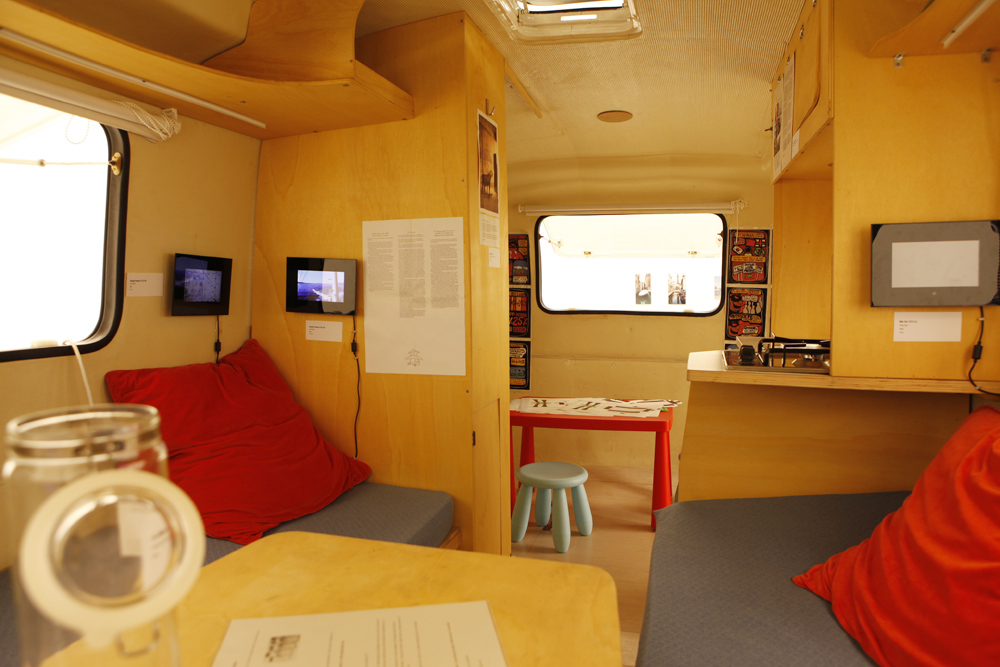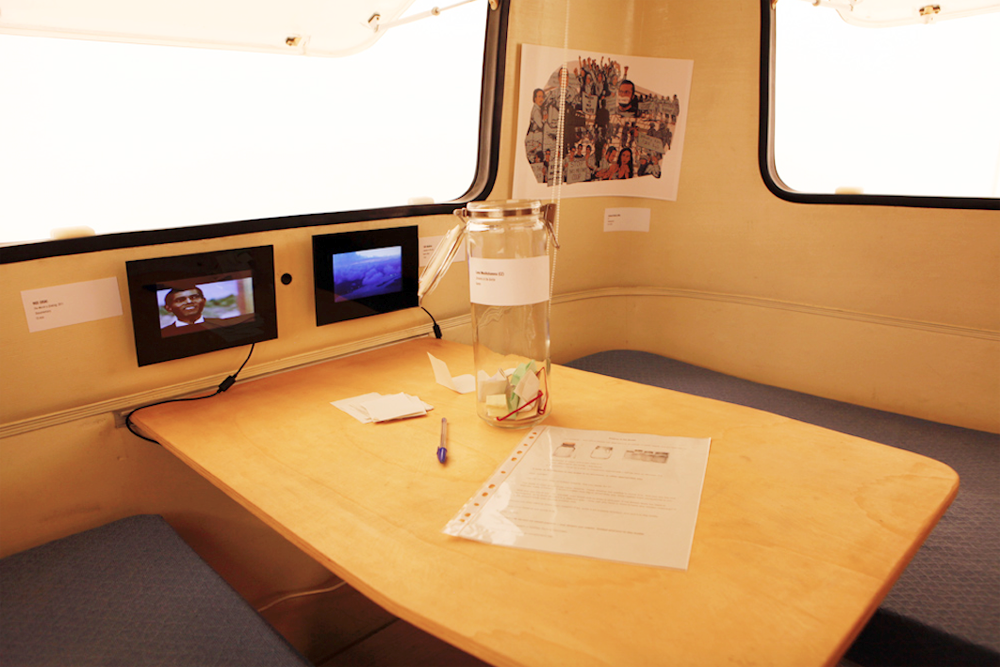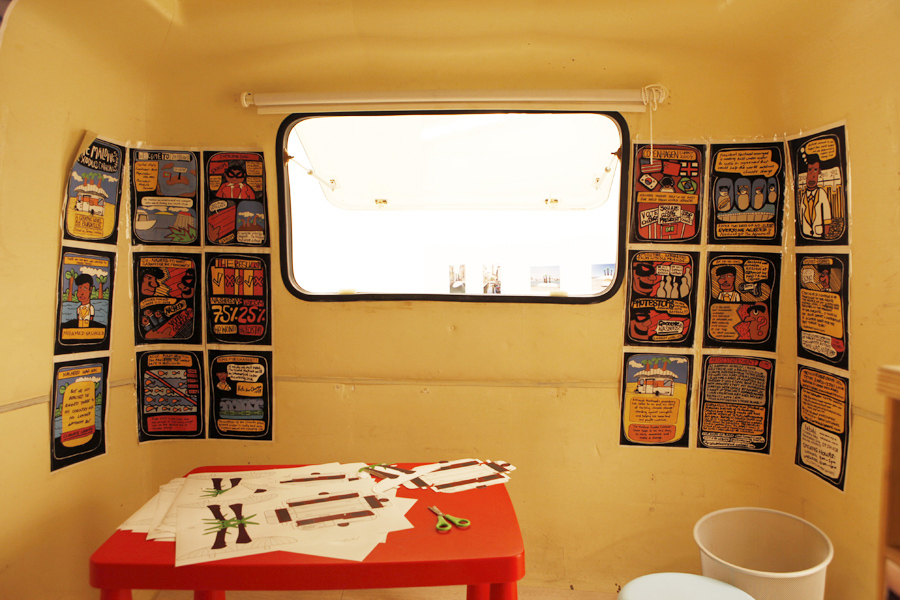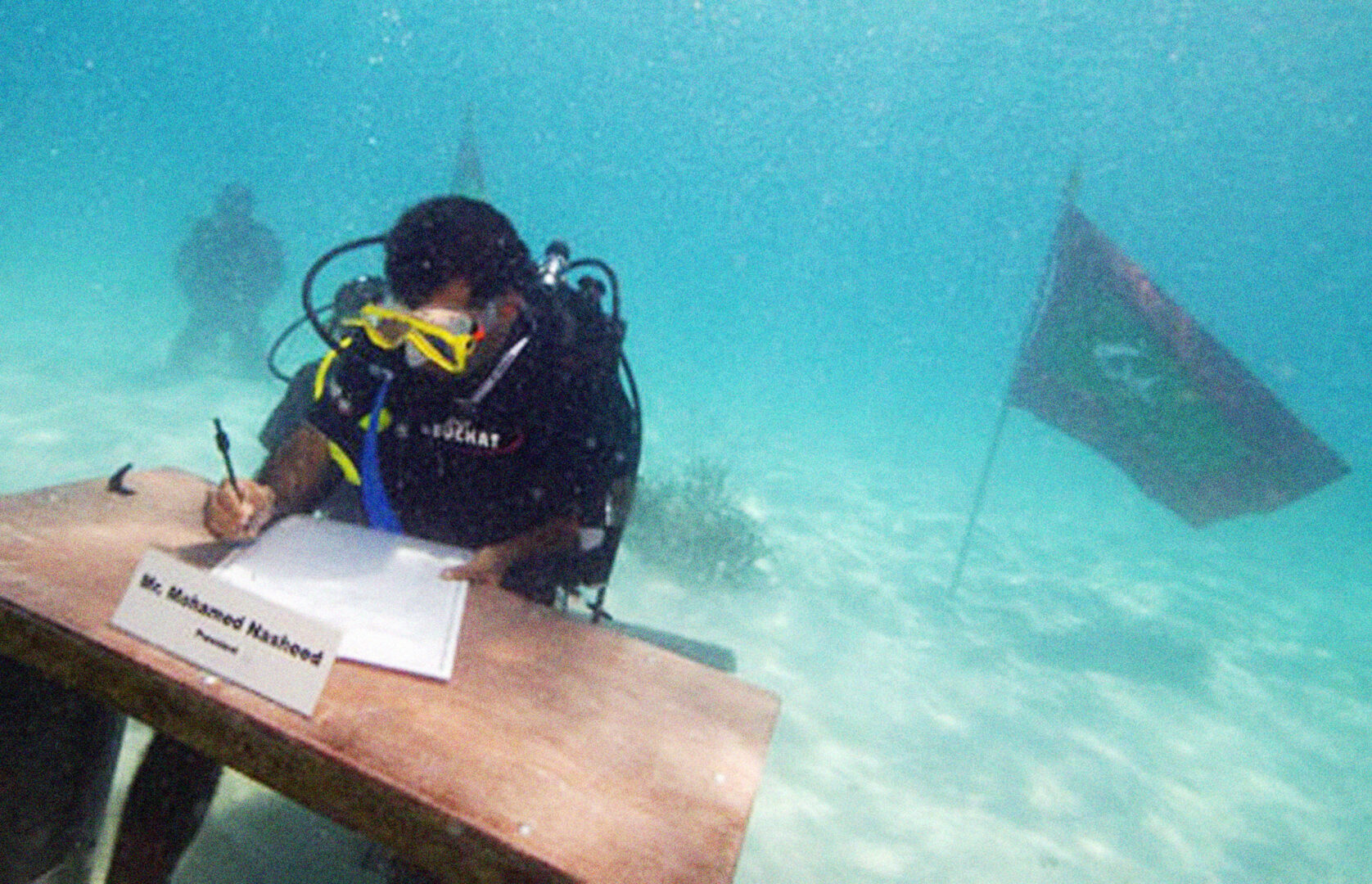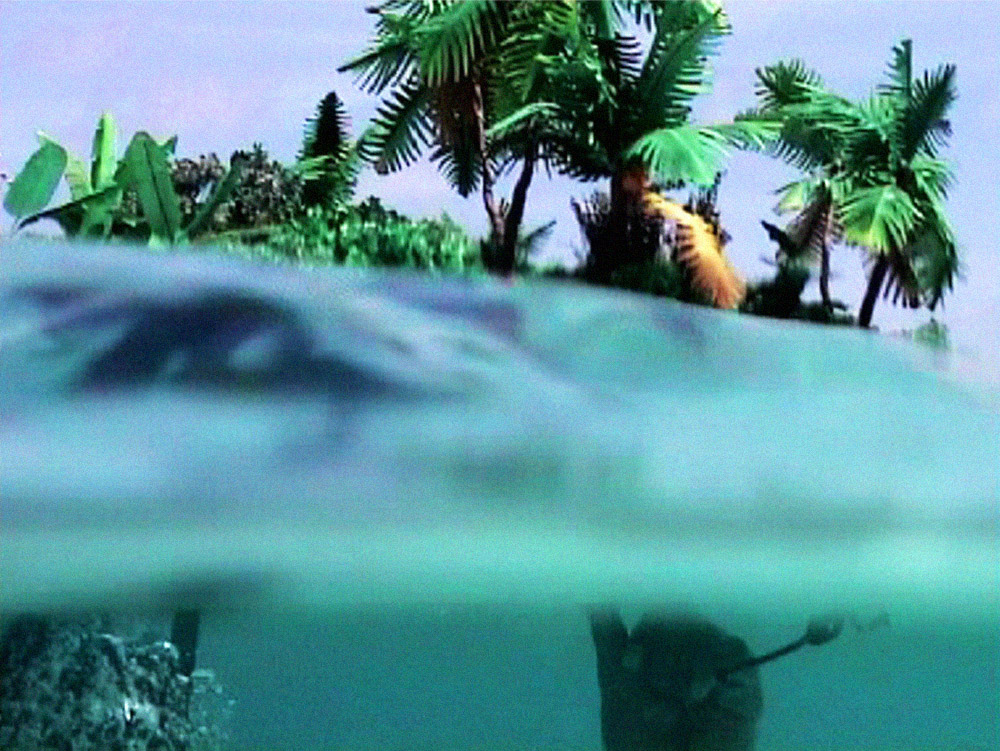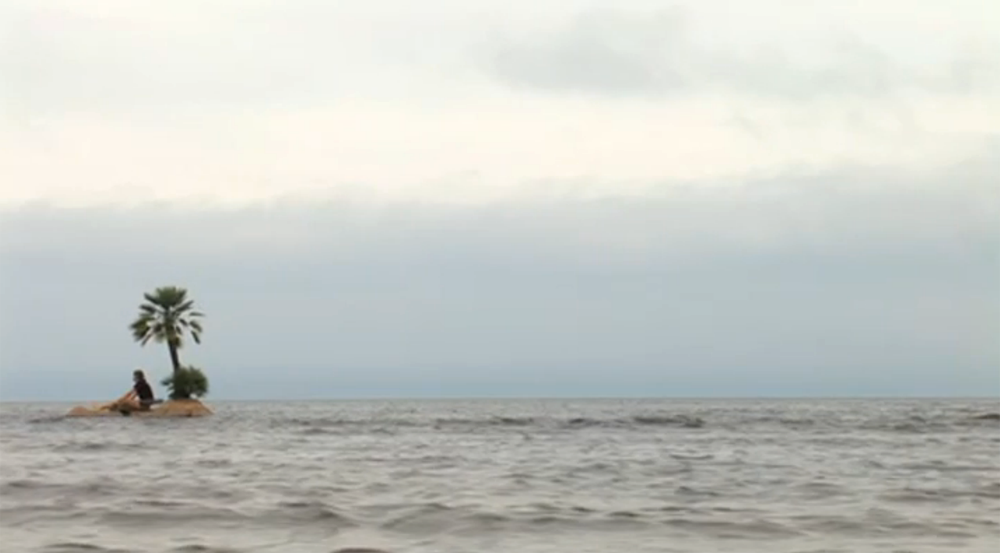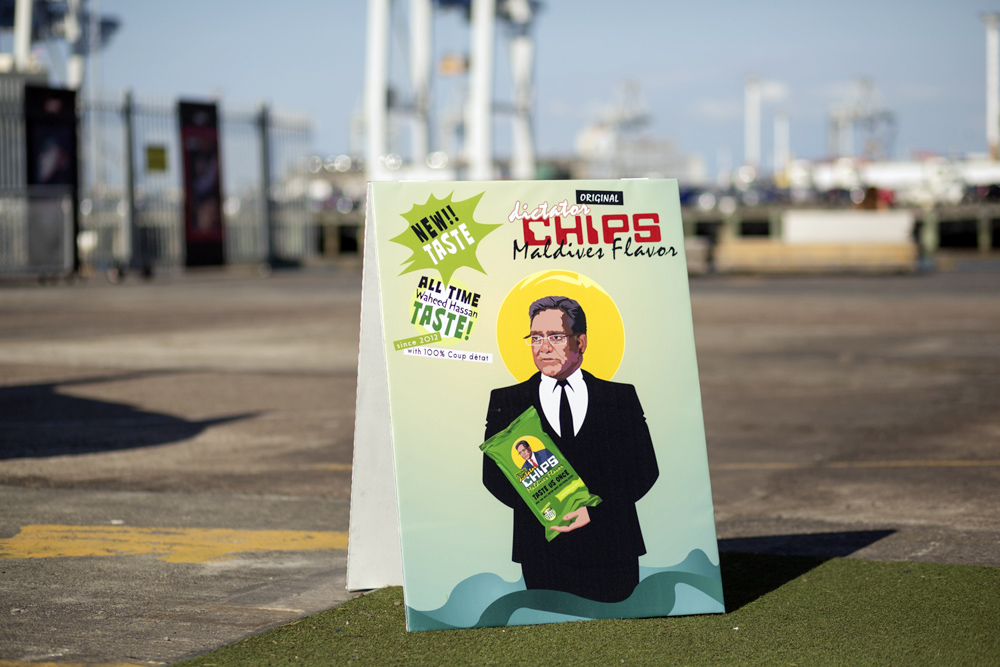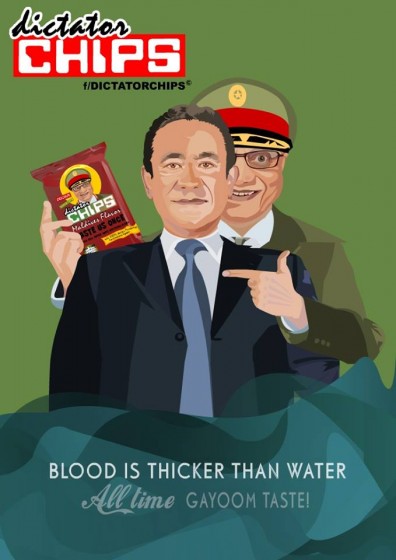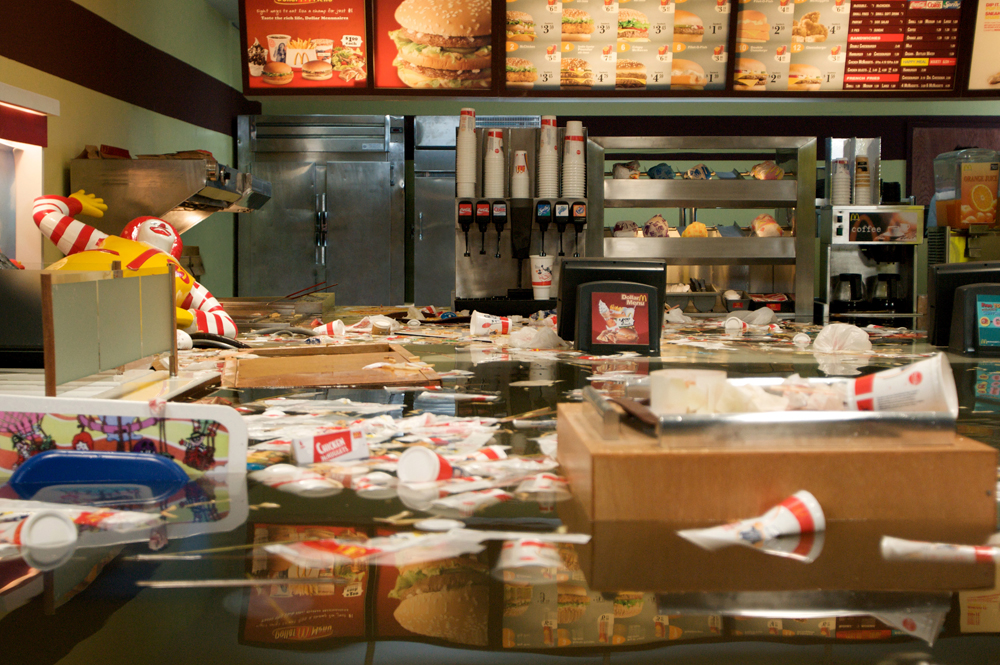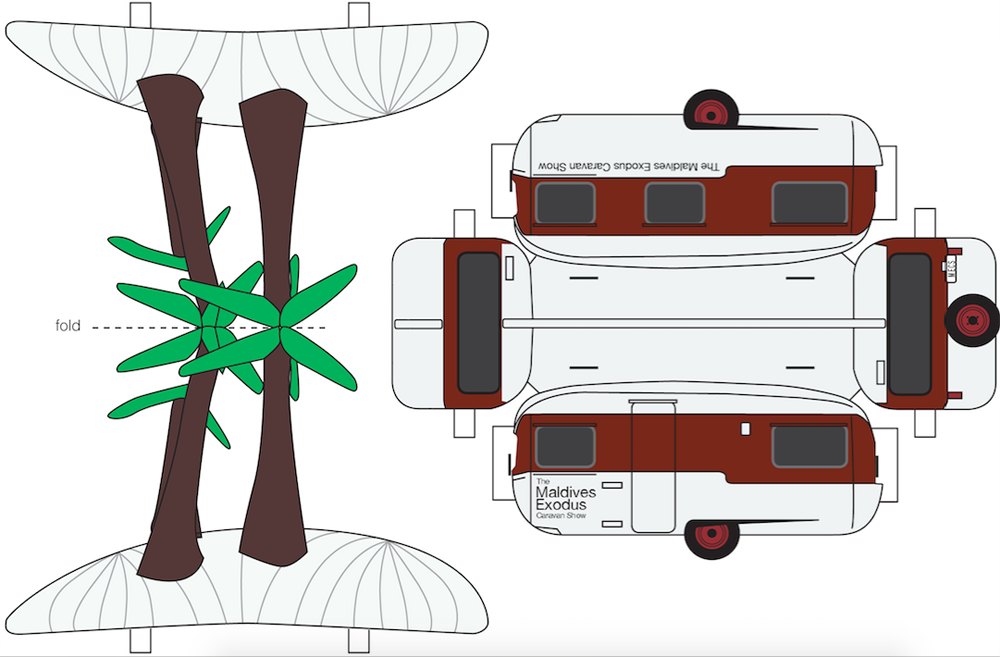Images: The Maldives Exodus Caravan Show at Venice Biennale and touring, showing artworks and situations from the exhibition.
ABOUT
The Maldives Exodus Caravan Show is curated by Søren Dahlgaard, Elena Gilbert & Microclima, first shown at the Official Collateral Event of the 55th Venice Biennale with Museum of Everything at Serra dei Giardini, 2013.
Featuring internationally well-known artists such as Bik Van der Pol, Antti Laitinen, Christian Falsnaes, SUPERFLEX, Rirkrit Tiravanija and ten artists from the Maldives, The Maldives Exodus Caravan Show is a mobile touring exhibition that acts to promote environmental and political awareness. Educational and aesthetically inventive, the exhibition consists primarily of non-physical artworks such as performances, videos, games & music.
PRESS
VICE documentary on the making of the exhibition in Venice – The Ideological Guide by e-flux, The Independent UK, ArtAsiaPacific Almanac issues 2014, 2015, 2016 & 2018 Hong Kong, Monopol Germany, Aljazeera, uncube magazine, Weekend Avisen newspaper Denmark on the politics behind, National Radio Denmark, National Radio New Zealand, KILL SCREEN NYC, The New Zealand Herald, Artnews New Zealand, Circuit Radio Interview, EyeContact review & ClockTower Radio interview New York, Kunsten.nu article, Denmark.
TOUR of The Maldives Exodus Caravan Show:
1. June – 25. November 2013 Venice Biennale, Italy.
8. March – 13. July 2014 Te Tuhi Arts Centre, Auckland, New Zealand.
21. September – 5. October 2014 Silent Barn Art Center, New York.
27. September 2014 – 15. March 2015 CCA Andratx Mallorca, Spain.
20. April – 17. May 2015 ART+CLIMATE=CHANGE2015 Melbourne, Australia.
27. June – 26. July 2015 Laznia Art Center Gdansk, Poland.
27. March – 2. April 2017 – ICAF Rotterdam, The Netherlands.
3. September 2017 – 7. January 2018 Museum De Domijnen, The Netherlands.
30. March – 9. May 2022 MAAT Museum of Art, Architecture and Technology, Lisbon, Portugal.
The photograph of the inflatable island on top of the caravan was part of the international group exhibition Visual Natures: The Politics and Culture of Environmentalism of the 20th and 21st Centuries.
TEXTS
Climate Change & The Struggle with Democracy in ‘Paradise’.
By Mr Nasheed, climate activist & first democratic President of Maldives from 2008-2012.
The Maldives Exodus Caravan Show in Venice is an important statement about the situation in Maldives right now – both in relation to the climate change issue and particularly in regards to the political situation. When Soren Dahlgaard in 2010 presented to me the idea of bringing these issues to Venice in the context of an art exhibition I welcomed the initiative.
The fight against climate change is a fight for human rights. It’s a fight for the right to exist in a healthy environment and to have the freedom that goes along with that. The climate debate is about that, and so is the fight for democracy.
I feel that now climate issues and human rights are equally important. You have to save the planet as much as save the people, and democracy can be built on that foundation. I would hope that Egyptians, or all the other democracy movements in the Middle East, would find climate change as a track that they have to address. They cannot come into government without understanding climate issues, and what is happening to the environment around them.
There is no Plan B; because there is no Planet B
At the moment, every country arrives at climate negotiations seeking to keep their own emissions as high as possible. This is the logic of the madhouse, a recipe for collective suicide. We don’t want a global suicide pact. We want a global survival pact.
We have to deal with the current political situation before we can deal with the climate challenge. The two are closely related.
The problems we are facing in the Maldives are a warning for other Muslim nations undergoing democratic reform. At times, dealing with the corrupt system of patronage the former regime left behind can feel like wrestling with a Hydra: when you remove one head, two more grow back. With patience and determination, the beast can be slain. But let the Maldives be a lesson for aspiring democrats everywhere: the dictator can be removed in a day, but it can take years to stamp out the lingering remnants of his dictatorship.
We do everything that we do for our children. Why are you working? Why am I working? We would not have any policies for ourselves, but we should have policies for our children.
The Maldives Exodus Caravan Show in Venice will host a much-needed continued platform for discussions and debate on these issues and I hope I will be able to come to Venice and participate in the program.
On The Land.
A moment of life concretely and deliberately constructed by the collective organization of a unitary ambience and a game of events.
By Rirkrit Tiravanija, artists and Professor in Colombia University NYC and founder of The Land Foundation in Chiang Mai, Northern Thailand together with Kamin Lertchaiprasert.
Written on the occasion of The Maldives Exodus Caravan Show in Venice and relating to the vegetable farm project on the island of Hibalhidhoo 2002-04, initiated by Danish artist Søren Dahlgaard.
The land was a straightforward translation from the Thai idea of a field or rice field, Te Naa, a place for agriculture generally associated with the cultivation of rice. The land itself was becoming redundant, strangely enough, too much water and flooding was making the parcels unproductive. Founded one the convergence of ideas and spirit, initially as a place for retirement, a place away from the daily grind of emergent globalized world. A place for and of friends, a collective and collaborative platform, refusing to become a place with proper name, or property, or project, nor easily digested and defined, the land is an open platform. It needed to be open to the will and projection of others, a shared vision, perhaps not a totality, not a goal nor an aim for a specific vision, rather a tabletop for ideas, discussions and experiment. Some visitors, may have arrive to the land with a specific intention while many arrived without expectations, only to participate in an opportunity to learn, and through participation one can form meaning and create their own visions. But it never was an imposition by one or the other, it was topography of difference and similarity, of idealism and of skepticism, of utopia and dystopia, perhaps it is simply, about living. The land has no means of finance but only the wealth of its own making, it is growth and cultivation, but with as much plan as it is organic. The land refuses to be self defining and refuses to submit itself to time, no edge nor boundary, not here nor there.
For the past ten or so more years, the land as and experiment, as a lab, has been concern with how to sustain sustenance, how to grow and cultivate rice and vegetation without the use of pesticides, insecticides nor chemicals for fertilization. The land has set itself up against the grains of what has became the norm of cultivation, and refuses to participate in the short sightedness of how on treats and tends to the conditions of the land. In the past ten years the land has become a model for neighboring farmers to observe and debate how organic cultivation could succeed to yield fruits and vegetation’s. Modeling it self from the lessons passed on from Thai Buddhists farmer by the name of Chaloui Kaewkong and the philosophies of Japanese farmer Masanobu Fukuoka (1913-2008), the land combines the ideas around cultivation of the topography which is 1/4 earth (mass) and 3/4 water (liquid), which is based on the composition of the human body with holistic planting and tending to the soil treatment. With deforestation and climate change, the valley in which is the setting for the land had been seeing a combination of flash floods and drought from year to year, but with the balance of groundmass to water, the land has been able to sustain a reasonable yield. The smaller plot for rice cultivation also has an effect on planting cycle and harvest, we have also been working on implementing permaculture and the ideas of veganic agriculture which goes further than organic standards, by eliminating the use of products that are derived from confined animals and by encouraging the presence of wild native animals on the farmland.
The land has also been implementing and testing the usage of biomass for fuel based on the designs by the artists group from Denmark, SUPERFLEX, an on going lab to test the system in living working conditions to supplement the ideas of sustaining a structure without the usage of grid electricity, and to experiment and find ways to create alternative ways of thinking and living.
The Interplay Between the Local and the Global in the Project in The Maldives Exodus Caravan Show.
By D. phil. Else Marie Bukdahl, Affiliated Professor at the University of Aalborg, Denmark and former Rector of The Royal Academy of Fine Arts in Copenhagen
Visual arts have always been interested in interpreting and visualizing nature’s many changing manifestations and the complicated, organic growth processes that have created them.
However, it was not until the 1960s that Environmental and Ecological Art began to appear. Robert Smithson (1938-73) and Robert Morris (1931-) established Land Art, which consisted of monumental interventions in or reconstructions of the natural surroundings. A number of other artists, for example Michael Singer (1945-) and Alan Sonfist (1946-), were occupied forming the landscape from the standpoint of nature itself, with a new ecological awareness. Joseph Beuys (1921-86) also created works from an ecological perspective, which he called social structures.
These artists have together with their colleagues created the premises for what later was called sustainable art or green art. They have shown how art, architecture and design can innovatively address environmental, social, political and economic concerns, as well as provide solutions that promote regenerative outcomes.
After these artists had embraced ecological problems and taken them into the world of art, increasing numbers of artists have followed their lead – for example, Rosalie Gascoigne, Maria Michails, Erwin Timmers and Nohra Corredor.
The Danish installation artist, Søren Dahlgaard (1973-), has also taken up the ecological challenge into his artistic practice. An illustration is his large project, Growing Vegetables, on the coral island Hibalhidhoo (Maldives), which he worked on from 2001-2004. He found out which vegetables could grow in the humid and hot tropical climate of the Maldives in order to produce fresh vegetables for the local residents and tourists. The author of Eco aesthetic a manifesto for the twenty-first century (2009), Rasheed Araeen, has stressed that Søren Dahlgaard has contributed in a productive way to “demolish the difference between instrumental productivity and artistic creativity.”
For the Biennale in Venice in 2013, Søren Dahlgaard‘s contribution to The Maldives Exodus Caravan Show is an inflatable island placed on top of the caravan pavilion. It will function as a unifying visual symbol for the many different activities in and around the Caravan that highlight the local political and ecological problems of the Maldives. These have global significance because they will raise consciousness of the key role that the relationship between society and nature will play in the challenges of the 21st century. This perspective is especially noticeable in the inventive collaborative work Playing around nature, created by Amani Naseem, who was born in and grew up in the Maldives.
The project in The Maldives Exodus Caravan Show contains original solutions regarding the relationship between art and ecology. It has a global perspective and transcends the given boundaries of the present art world in an inspiring way. It will enable us to become more active in the efforts to protect nature and create sustainable growth and solve ecological issues, which will benefit nature and our society. We will be drawn into a fascinating artistic space of experience that widens our perspective in our daily world.

